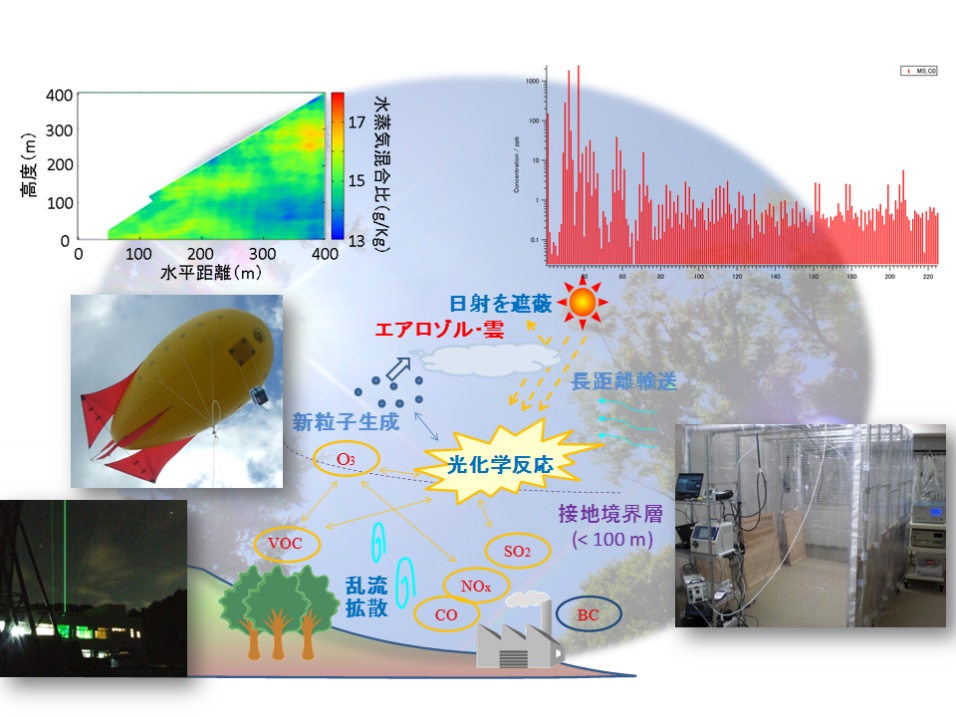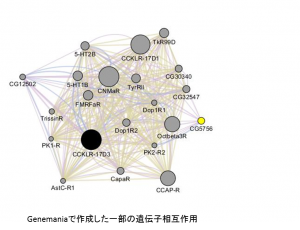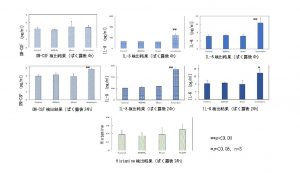2019 Activity Report for Mission 5-1: Harmonization of Human Health and the Environment
Updated: 2020/05/12
Research 1-1: Production of bioactive compounds from plant biomass
Principal Investigator (PI): Takashi Watanabe (RISH, Kyoto University)
Research collaborator(s): Hiroshi Nishimura, Ruibo Li, Chihiro Kimura, Yumi Okabe, Tatsuya Miyazaki (RISH, Kyoto University), Ryota Ouda (Graduate School of Medicine, Hokkaido University), Ryo Narita, Takashi Fujita (Institute for Frontier Life and Medical Sciences, Kyoto University), Osamu Matsuda, Eriko Ohgitani, Rio Kashimoto (Graduate School of Medicine, Kyoto Prefectural University of Medicine)
We studied production of antiviral and antitumor compounds by microwave degradation of wood and sugarcane bagasse in collaboration with Institute for Frontier Life and Medical Sciences, Kyoto University and Kyoto Prefectural University of Medicine. In FY 2019, we found that chemical degradation of wood and sugarcane bagasse produced antiviral and antitumor lignin. Our results indicate that the antiviral activity emerged through severe alteration of the native lignin structure. Furthermore, it was revealed that the antiviral lignin inactivated encephalomyocarditis virus (EMCV) virions through direct contact [1-4]. We separated antitumor lignin fractions, and analyzed their structure and cell response such as induction of apoptosis and cytokine.

Antiviral activity of lignin fractions from sugarcane bagasse separated by microwave solvolysis against EMCV [1-4].
Publications, etc.
- Chihiro Kimura, Ruibo Li, Ryota Ouda, Hiroshi Nishimura, Takashi Fujita, and Takashi Watanabe, Production of antiviral substance from sugarcane bagasse by chemical alteration of its native lignin structure through microwave solvolysis, ChemSusChem, 13, in press (2020).
- Takashi Watanabe, Conversion of Lignocellulosic Biomass for Sustainable Humanosphere, Joint symposium on Tropical Studies, Green Innovation on Tropical Forest and Forest Industries Toward Sustainable Livlihood, Berau, Indonesia, Sep 4-6 2019. (Invited lecture)
- Chihiro Kimura, Ruibo Li, Ryota Ouda, Hiroshi Nishimura, Takashi Fujita and Takashi Watanabe, Production of antiviral compounds from sugarcane bagasse by microwave solvolysis, The 20th International Symposium on Wood, Fiber, and Pulping Chemistry, Tokyo, Japan, Sep. 9th – 11th, 2019
- Chihiro Kimura, Ruibo Li, Ryota Ouda, Hiroshi Nishimura, Takashi Fujita and Takashi Watanabe, Lignin-based antiviral inhibitor produced by microwave glycerolysis from sugarcane bagasse, The 4th Asia Research Node Symposium on Humanosphere Science, Nanjing, China, Dec 26-27, 2019.
- Ruibo Li, Ryota Ouda, Chihiro Kimura, Hiroshi Nishimura, Takashi Fujita and Takashi Watanabe, Microwave-Assisted Degradation of Woody Biomass for Application as Antiviral Agent against Encephalomycarditis Virus, Lignin Symposium, 1st International Lignin Symposium, Sapporo, Sep 13-15 2019.
- Yumi Okabe, Eriko Ohgitani, Osam Mazda and Takashi Watanabe, The Development of Microwave Solvolysis Lignin for Antitumor Activity and Structure Analysis, The 4th Asia Research Node Symposium on Humanosphere Science, Nanjing, China, Dec 26-27, 2019.
Research 1-2: Production mechanism of bioactive compounds and biotechnology
Principal Investigator (PI): Kazufumi Yazaki (RISH, Kyoto University)
Research collaborator(s): Ryosuke Munakata (RISH, Kyoto University), Alain Hehn (Université de Lorraine, INRA, France), Hideyuki Suzuki (Kazusa DNA Research Institute), Hikaru Seki (Graduate School of Engineering, Osaka University), Akifumi Sugiyama (RISH, Kyoto University), Tomoya Takemura (RISH, Kyoto University)
Many lipophilic plant secondary metabolites exhibit strong biological activities and some are prescribed in clinical fields, e.g., vincristine and paclitaxel serving as anti-cancer drugs, while a large portion of their biosynthesis and secretion mechanisms from the cells remain to be clarified. Particularly, prenylated polyphenols exhibit a variety of biological activities and have a large potential to be utilized as natural compounds beneficial for human health. In this study, we have tried to produce artepillin C in yeast, which shows an anti-cancer and anti-adiposity effects but is available only from Brazilian plants. For this purpose, we have identified a new prenyltransfearse from a Japanese plant Artemisia capilaris, and the gene is utilized to produce artepillin C with four other biosynthetic genes of plants.
Publications, etc.
- Munakata, R., Kitajima, S., Nuttens, A., Tatsumi, K., Takemura, T., Ichino, T., Galati, G., Vautrin, S., Bergès, H., Grosjean, J., Bourgaud, F., Sugiyama, A., Hehn, A. Yazaki, K., Convergent evolution of the UbiA prenyltransferase family underlies the independent acquisition of furanocoumarins in plants, New Phytol., 225 (5), 2166-2182 (2020).
- Munakata, R., Takemura, T., Tatsumi, K., Moriyoshi, E., Yanagihara, K., Sugiyama, A., Suzuki, H., Seki, H., Muranaka, T., Kawano, N., Yoshimatsu, K., Kawahara, N., Yamaura, T., Grosjean J., Bourgaud, F., Hehn, A., Yazaki, K., Isolation of Artemisia capillaris membrane-bound di-prenyltransferase for phenylpropanoids and redesign of artepillin C in yeast, Biol., 2, 384 (2019).
- Ueoka, H., Sasaki, K., Miyawaki, T., Ichino, T., Tatsumi, K., Suzuki, S., Yamamoto, H., Sakurai, N., Suzuki, H., Shibata, D., Yazaki, K., Functional characterization of a cytosol-localized geranyl diphosphate synthase from Lithospermum erythrorhizon and its molecular evolution, Plant Physiol., in press.
- Kusano, H., Li, H., Minami, H., Kato, Y., Tabata, H., Yazaki, K., Evolutionary developments in plant specialized metabolism, exemplified by two transferase families, Frontiers Plant Sci., 10, 794, 2019.
- Munakata, R., Yazaki, K., Redesign of artepillin C biosynthesis in yeast as a biological active component of propolis ,Bioscience & Industry (Japanese), in press.
- Invited lecture: 6th Symposium on Redesigning of Biosynthetic Machinery, “Redesign of porenylated polyphenols by metabolic and transport engineerings” 11th October, 2019 (Sapporo)
- Press release, Kyoto University, “Discovery of artepillin C biosynthetic gene and its application to synthetic biology” 25th October, 2019
- Zeikei Newspaper, “Discovery of biosynthetic gene of artepillin C from a weed – Expecting domestic production of high quality proporis – ” 27th October, 2019.
Research 1-3: Establishment of unit reaction for biological production of antitumor lignans
Principal Investigator (PI): Toshiaki Umezawa (RISH, Kyoto University)
Research collaborator(s): Yu Matsuura, Keisuke Kobayashi, Masaomi Yamamura, Shiro Suzuki, Yuki Tobimatsu (RISH, Kyoto University)
Lignan is a class of phenylpropanoid dimers liked via C8-C8′ side chains of two phenylpropane units. Lignan has various biological activities. Among them, podophyllotoxin is an anti-tumor lignan and establishment of a stable biolotechnological production systems of the lignan is desired. In this study, we have attempted to clone cDNAs encoding enzymes involved in the antitumor lignan biosynthesis and to characterize the enzymes. Eight genes of lignan O-methyltransferases (OMTs) that catalyze the O-methylation in the lignan biosynthetic pathway have so far been isolated from several plants. In this school year, we analyzed lignan OMTs from hinokiasunaro (Thujopsis dolabrata var. hondae), a podophyllotoxin-congener producing plant, and proposed a pathway from matairesinol towards deoxypodophyllotoxin via 4-O-demethylyatein.
Publications
- Matuura Y, Yamamura M, Kawai S, Umezawa T, The 70th Annual Meeting of the Japan Wood Research Society, Tottori, March 16-18, 2019 (Oral)
Research 1-4: Insect model to discover physiologically active substances in biomass (plants and microorganisms) – searching for gene resources though grooming behavior –
Principal Investigator (PI): Aya Yanagawa (RISH, Kyoto University)
Research collaborator(s): Coby Schal (North Carolina State University), Trudy Mackay (Clemson University), Wen Huang (Michigan University), Akihiko Yqmamoto (North Carolina University), Ayako Katsumata(North Carolina State University),
Animals groom themselves or each other. It appears, for example, that leg shaking in humans is a grooming behavior. Hence, the factors involved in grooming regard important to abnormal behaviors from stress or cardiac disorders. We would like to contribute medical treatments that can ease abnormal behaviors by clarifying the genes or chemical factors involved in grooming using an insect model. In 2019, we identified genes associated with natural variation in spontaneous grooming behavior of Drosophila melanogaster by performing genome-wide association analyses in the inbred sequenced lines of the Drosophila melanogaster Genetic Reference Panel. A total of 107 molecular polymorphisms, of which 73 were in or near 70 genes and 34 were over 1 kilobase from the nearest gene, were associated with spontaneous grooming behavior. The results suggest that spontaneous grooming of adult flies is specified by developmental and sensory genes during larval stage
Publications, etc.
- Aya Yanagawa, Claudine Neyen, Marie-Ange Chabaud, Toshimitsu Hata, Tsuyoshi Yoshimura, Bruno Lemaitre, Frédéric Marion-Poll. Microbial cues to induce grooming in Drosophila melanogaster to resist their infection. SIP/IOBC 2019 (July 2019, Valencia)
- Aya Yanagawa, Antoine Couto, Jean-Christophe Sandoz, Toshimitsu Hata, Aniruddha Mitra, Moutaz Ali Agha, Tsuyoshi Yoshimura, Frédéric Marion-Poll. Gustatory cues from microbe to induce grooming reflex, 26th European Drosophila Research Conference (Sep 2019, Lausanne).
- Aya Yanagawa, Microbial cues used by Drosophila in their disease resistant grooming. Mini-symposium in 26th EDRC (Sep 2019, Lausanne)
- Aya Yanagawa, Antoine Couto, Jean-Christophe Sandoz, Toshimitsu Hata, Aniruddha Mitra, Moutaz Ali Agha, Tsuyoshi Yoshimura, Frédéric Marion-Poll. Perception of commercial LPS by Drosophila gustatory receptors (41th meeting of Japanese society of comparative and neurophysiology, Nov 2019, Tokyo).Karim, M.R., Yanagawa, A., Ohinata, K., Soy undecapeptide induces Drosophila hind leg grooming via dopamine receptor, Biochem Biophys Res Commun. 499 (3), 454-458, 2018. doi: 0.1016/j.bbrc.2018.03.162
Research 1-5: Identification of transporters for bioactive compounds and their application for production
Principal Investigator (PI): Akifumi Sugiyama (RISH, Kyoto University)
Research collaborator(s): Shinjiro Ogita (Prefectural University of Hiroshima.), Nobukazu Shitan (Kobe Pharmaceutical University)
Although caffeine is known to be secreted during germination, no caffeine transporters have been identified in coffee plants. We aimed to identify and analyze the function of caffeine transporters. In addition, plant alkaloids, are important for human health, and sustainable production is required. The alkaloid transporters can be introduced in combination with biosynthetic genes for the efficient production of bioactive components. We identified an adenine transporter in coffee plant.
Publication
- Kakegawa H., Shitan N., Kusano H., Ogita S., Yazaki K., Sugiyama A. (2019) Uptake of adenine by purine permeases of Coffea canephora. Bioscience, Biotechnology, and Biochemistry 83:1300–1305.
Research 2: Biological effects of electromagnetic fields
Principal Investigator (PI): Junji Miyakoshi and Naoki Shinohara (RISH, Kyoto University)
There exists a wide variety of non-ionizing radiation (electromagnetic fields, EMF) in human living environments. There is increasing international discussion about the health risks of EMF exposure. We performed a risk assessment of EMF exposure using cellular and genetic examinations.
・Biological safety assessment of environmental EMF (millimeter and terahertz frequencies) fields.
・Biological safety assessment of EMF from wireless power transfer systems in human living environments.
We performed experiments to investigate what kind of influence was seen in living human body by electromagnetic waves used for Wireless Power Transmission (WPT) system. For this purpose, Human epidermal keratinocytes (HaCaT Cells, keratinocytes) were used for 400 kHz exposure experiments making consideration the depth from the living body surface. A cytokine production test and a histamine production test, which are indicators of skin immune response upon exposure to 400 kHz, were performed.
In HaCaT cells exposed to 400kHz (conditions: 160A / m, twice the ICNIRP occupational guidelines 80A / m, 1 hour), the effects of cytokines (IL-6, IL-8 and GM-CSF) and histamine productions were analyzed by ELISA method. Significant cytokine production was observed with positive control by the drug (ionomycin or aqueous sodium hydroxide), however no increase in cytokines was observed in supernatants of exposed samples and in cell extracts. From the above observations, it is considered that there is no or extremely low effect on skin immunity due to exposure to 400 kHz in HaCaT cells.
In the above experiment, when the HaCaT cells were exposed to 400 kHz, no change was observed in the cytokine and histamine production. Recently, an epigenetic effect has been suggested to be associated with carcinogenicity, in which DNA methylation and histone modification tests to search for effects on gene expression regulation without DNA breakage (no change in nucleotide sequence). Therefore, we are planning to conduct research on an epigenetic effects of 400 kHz electromagnetic fields in 2020.
Publications etc.
- Miyakoshi, H. Tonomura, S. Koyama, E. Narita, N. Shinohara, Effects of exposure to 5.8 GHz electromagnetic field on micronucleus formation, DNA strand breaks, and heat shock protein expressions in cells derived from Human eye. IEEE Xplore, Engineering in Medicine and Biology Society, 18(2): 257-260 (2019).
- Junji Miyakoshi, Cellular Effects of Radio Frequency, Millimeter, and Terahertz Waves; in “Biological and Medical Aspects of Electromagnetic Fields, Fourth Edition” (eds. Ben Greenebaum and Frank Barnes), The Handbook of Biological Effects of Electromagnetic Fields, CRC Press (Taylor & Francis Group) London, pp 69-88. (2019)
Research 3: Air quality issues in outdoor and indoor environments
Principal Investigator (PI): K. Takahashi and M. Yabuki (RISH, Kyoto University)
Human activities increasingly influence the Earth’s climate and ecosystems. For instance, humans change the atmospheric aerosol loadings by emitting primary aerosol particles and a variety of trace gases that could be chemically transformed to give aerosol particles. Aerosol particles impact the Earth’s climate on a regional and global scale. Our study aims to develop in-situ and remote sensing techniques for observing trace gases and aerosol particles and their applications to outdoor and indoor measurements, which is closely linked to air quality issues in outdoor and indoor environments. In FY2019, we have demonstrated new lidar systems for observing the ozone and aerosol spatial distributions and conducted traverse measurements in an urban area of Sakai, Osaka Pref. to reveal the spatio-temporal variations of aerosol size distributions.
 Development of new techniques for exploring spatio-temporal variations of atmospheric trace molecules and aerosol particles in outdoor and indoor environments.
Development of new techniques for exploring spatio-temporal variations of atmospheric trace molecules and aerosol particles in outdoor and indoor environments.
Publications
- Yabuki, M., Y. Kawano, Y. Tottori, M. Tsukamoto, E. Takeuchi, T. Hasegawa, and T. Tsuda, A Raman lidar with a deep ultraviolet laser for continuous water vapor profiling in the atmospheric boundary layer , The 29th International Laser Radar Conference (ILRC29)( Hefei, China,) June 24-28, 2019.







